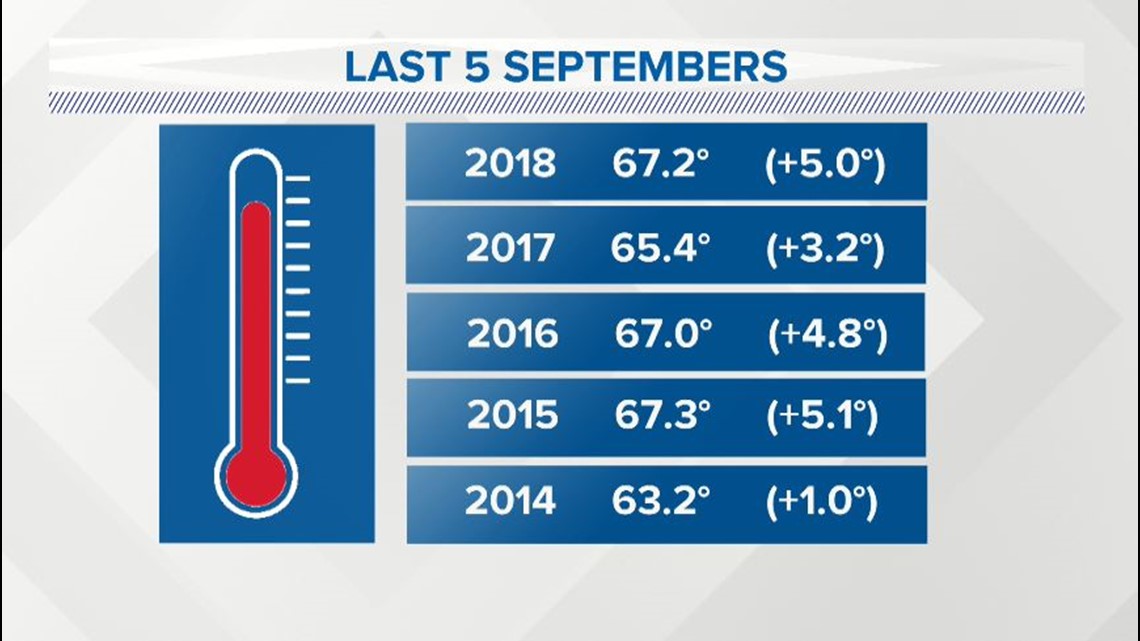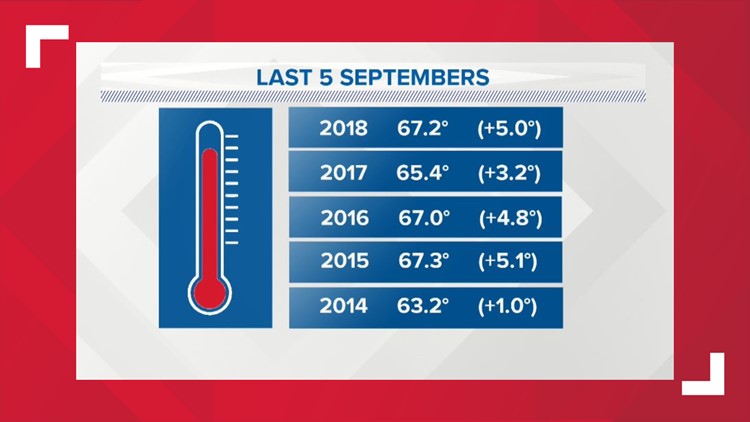September seems to have become the “middle child” of Buffalo’s yearly weather story. We rightfully brag about our mild summers. We jump to defend our winters and our “Buffalo tough” attitude towards them. But let’s not forget about what a treat September can be. After all, three weeks out of the month are technically still part of summer, at least if you go by an astronomer’s calendar.
This September got off to a cool, wet start, but after September 9, just five days fell below the daily average, usually by just a couple degrees. The month finished with an average temperature of 65.4 degrees; 2.9 degrees above normal.
September 2019 is certainly not a trendsetter. The previous five Septembers were also warmer than normal; many of them much warmer than in 2019. See the list below.


Out of the past 20 years, 17 September months finished above average for Buffalo. Four of those Septembers are in a list of the top-10 warmest.
That pattern extends deeper into autumn too. In the past 20 years, 15 Octobers were above normal; two of those made the top-10 list. November is split a bit more evenly between above and below normal months, but out of the ones that were warmer than normal, four are in the top-10 list.
With consistent trends like this, there’s no doubt that the fall season has been getting warmer. Since 1970, the temperature averaged from September through November has risen just over 2 degrees Fahrenheit.


Warmer falls can mean significant shifts in the growing season of popular foods like apples and pumpkins. In fact, farmers in Western New York are already feeling the effects of shifts during both the fall and the spring. A longer growing season may sound fine, good even, but despite prolonged warmth, sudden spikes in storminess or harsh cold still arrive on schedule, even if the crops haven’t shut down for the winter.
A warming fall could also mean difficulties for businesses that rely on a timely start to the cold, snowy season to get things going into winter.
Be sure to watch Climate Minute at wgrz.com/climate for more about why Earth’s climate is changing and what it could mean for Western New York.



